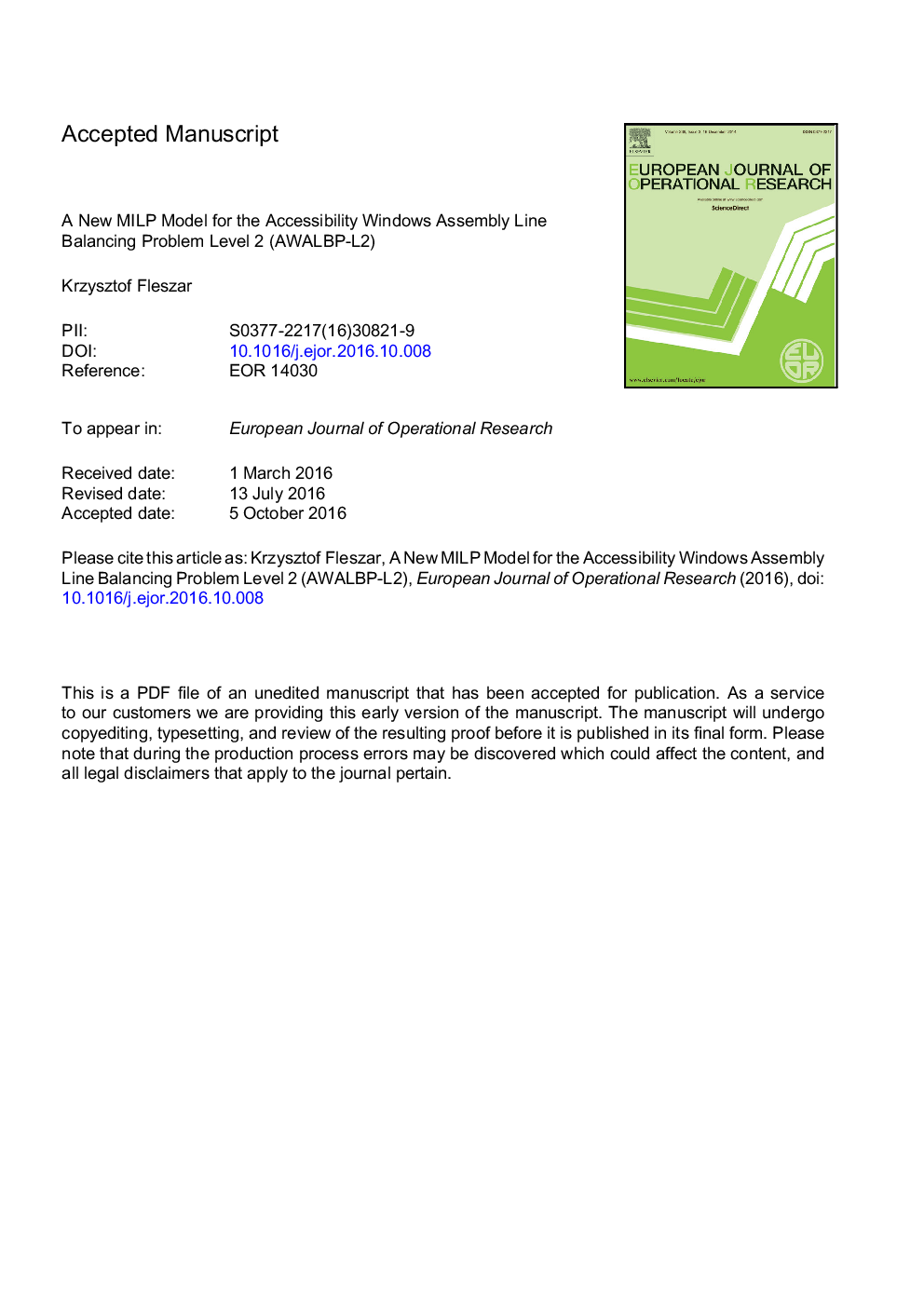| Article ID | Journal | Published Year | Pages | File Type |
|---|---|---|---|---|
| 4959921 | European Journal of Operational Research | 2017 | 14 Pages |
Abstract
We consider a variant of the assembly line balancing problem in which each workstation has a limited accessibility window through which it can access only a portion of a workpiece or portions of consecutive workpieces. The cycle of the line is divided into several stationary stages, and in each stage, each workstation can perform only those tasks that are accessible by it during the stage. This problem arises in practice in the automatic assembly of printed circuit boards. The solution of the problem calls for deciding the number and the offsets of the stationary stages, as well as for assigning the tasks to compatible workstations and to the stationary stages. The objective is to minimize the cycle time, which is equal to the sum of stage completion times and inter-stage transportation times. We propose a new MILP model for two variants of the problem, one in which each task has only one compatible workstation, i.e., tasks are preassigned to workstations, and the other in which tasks can be compatible with multiple workstations. Our model is much simpler than the MILP models proposed previously in the literature. Computational experiments show that the proposed MILP model outperforms all previously proposed methods for the first variant of the problem. For the standard set of 1200 test instances, of which about 81% were solved to optimality before, we close the gap for all but two instances. Computational experiments for the second variant show that this variant is much harder to solve to optimality.
Keywords
Related Topics
Physical Sciences and Engineering
Computer Science
Computer Science (General)
Authors
Krzysztof Fleszar,
